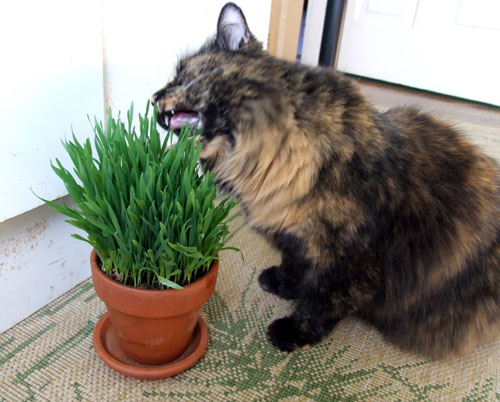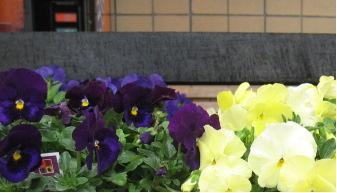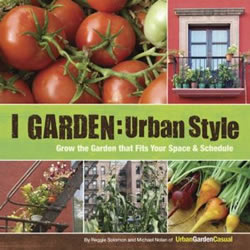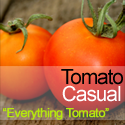Posted on 19 April 2010 by urbangardencasual.com
 By Sonya Welter
By Sonya Welter
Nature is not something that only happens in the countryside.
Even the most urban of cities are home to birds, mammals, bugs and other wildlife, and those critters depend on native wildflowers, grasses, trees and other plants provide food and shelter.
Native plants also tend to be deep-rooted and work well to control erosion and improve soil quality.
In an urban landscape, you can find native plants in parks, gardens or abandoned lots, but these plants are under constant threat from development or invasive species. If you want to bring a little wilderness to your city, you can work to save and grow native plants.
First, educate yourself about what plants are native to your area. Just because you see a flower growing in the wild doesn’t mean Read the rest of this entry »
Posted on 18 April 2010 by urbangardencasual.com
 By Mindy McIntosh-Shetter
By Mindy McIntosh-Shetter
The first day of spring provided me with the perfect weather for one of my favorite eco-friendly activities.
After a long, cold winter I like any excuse to celebrate Mother Earth and encourage others to do the same.
So on the first warm day I get all my supplies together to start my celebration that I spread across the country.
One may ask what such a project could be and I would surprise you with one simple answer that is a plantable letters or cards.
These letters or cards are made from all the junk/scrape paper that I have kept over the winter and seeds that I have saved from my garden or purchased from a local discount store. These handmade letters or cards are mailed to my friends across the country with updates about my life and reminding them to celebrate April 22 (Earth Day) by planting their letters or cards.
Planting these letters or cards can spread seeds of hope and truly can prove that 1 person can make a difference in this world even if it is one plantable letter or card at a time. So with the directions below spread your own seeds of hope.
Handmade Paper
Supplies
Posted on 11 April 2010 by urbangardencasual.com
 By Sonya Welter
By Sonya Welter
Some people grow their own wheat grass to juice for smoothies.
It’s so loaded with vitamins, minerals, enzymes and chlorophyll that it’s referred to as a superfood, capable strengthening the immune system and battling any number of ailments.
But I grow wheat grass for a much more important reason. I grow wheat grass for my cats.
Growing your own wheatgrass is much cheaper than the cutesy grow-you-own-cat-grass packets sold in pet stores or the trays of fresh wheatgrass in the produce department of fancy grocery stores. Wheat grass is sprouted wheat berries (which can also be ground to make wheat flour).
Almost any Read the rest of this entry »
Posted on 08 April 2010 by urbangardencasual.com
 By Sonya Welter
By Sonya Welter
As a born and bred Midwesterner, for most of my life I assumed that rosemary–and, for that matter, every other herb–was a small, compact plant that grew in pots on people’s patios.
So when I went to Spain in college, I was stunned to discover that in its native habitat, rosemary is actually a bushy, aromatic, evergreen hedge that can reach up to six feet tall.
The hotel where I stayed in Toledo was on the edge of town and bordered some open scrub land; the rosemary there may have been intentional landscaping or may have sprouted up on its own, but either way it was a revelation.
In a cold climate Read the rest of this entry »
Posted on 02 April 2010 by urbangardencasual.com
 By By Mindy McIntosh-Shetter
By By Mindy McIntosh-Shetter
Read Part 1 of 2-part article.
PANSIES
These lovely plants are one of my favorites and bring memories flowing back about my great-grandmother’s garden.
Every Easter her yard was full of voila, which are a pansy, and flower boxes full of Johnny Jump Ups and pansies.
Every fall painted the same picture with the coolness of the up coming winter.
Now days I plant pansies as a way of treating my gardening itch inexpensively. But again my frugal nature demands duality in my plants and pansies play that part. They provide a splash of color to my garden and create a colorful backdrop to Read the rest of this entry »
 By Sonya Welter
By Sonya Welter By
By  By Sonya Welter
By Sonya Welter By Sonya Welter
By Sonya Welter By By Mindy McIntosh-Shetter
By By Mindy McIntosh-Shetter












